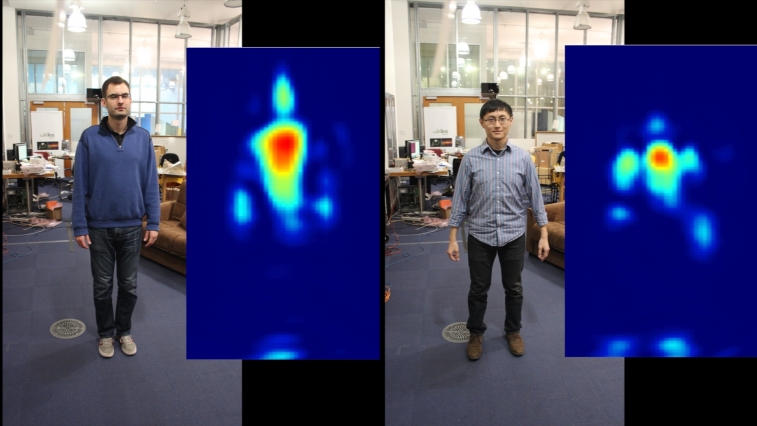Back in 2012 a team of researchers from MIT’s Computer Science and Artificial Intelligence Lab (CSAIL) has been working to develop a technology that can see through walls and distinguish differences between people or objects that lie behind them.
The team’s new technology called RF Capture picks up wireless reflections off the human body to see the silhouette of a human standing behind a wall.

CSAIL researchers have already been working on technology that uses wireless signals to track human motion and has demonstrated that it can pick up gestures from the other side of a house, which may have potential applications in search and rescue missions.
Now they’ve developed the device that can trace a person’s hand as he or she writes in the air and even distinguish between 15 different people through a wall with almost 90% accuracy.
“We’re working to turn this technology into an in-home device that can call 911 if it detects that a family member has fallen unconscious,” said Dina Katabi, director of the Wireless@MIT center and co-author of the paper. “You could also imagine it being used to operate your lights and TVs, or to adjust your heating by monitoring where you are in the house.”
Katabi also envisions future versions that could be integrated into gaming interfaces so that you can play from different rooms.
How it works
The device transmits wireless signals that travel through a wall and reflect off a person’s body back to the device. It then captures these reflections and analyzes them in order to see the person’s silhouette.
Since all humans give off the same signal, the team had to figure out how to distinguish between different people and body parts.
“The data you get back from these reflections are very minimal,” said Katabi. “However, we can extract meaningful signals through a series of algorithms we developed that minimize the random noise produced by the reflections.”
According to MIT, the device scans 3D space to capture wireless reflections off objects in the environment,but since only a subset of body parts reflect the signal back at any given point in time, the device tracks how these reflections vary as someone moves in the environment and reconstruct the reflections of a silhouette into a single image.
To differentiate between people, the team tested it on different subjects using factors like height and body shape to create concrete “silhouette fingerprints” for each person.
Bringing the device to market
According to the Associated Press, by 2017 the device will begin being marketed by a spin-off company called Emerald and could be available for just $250 to $300 to the public. In August the team presented Emerald to President Obama as part of the White House’s first annual Demo Day.
Story via MIT.


Comments are closed, but trackbacks and pingbacks are open.